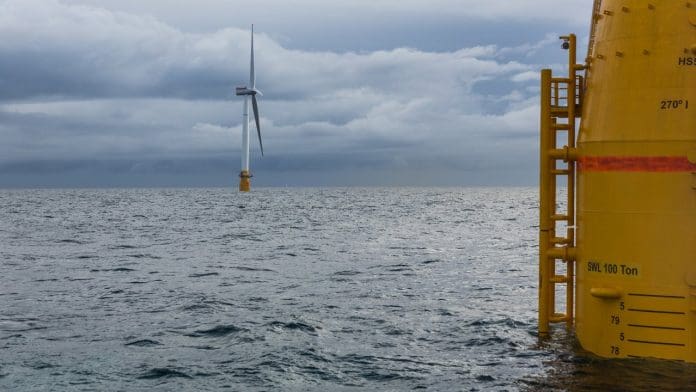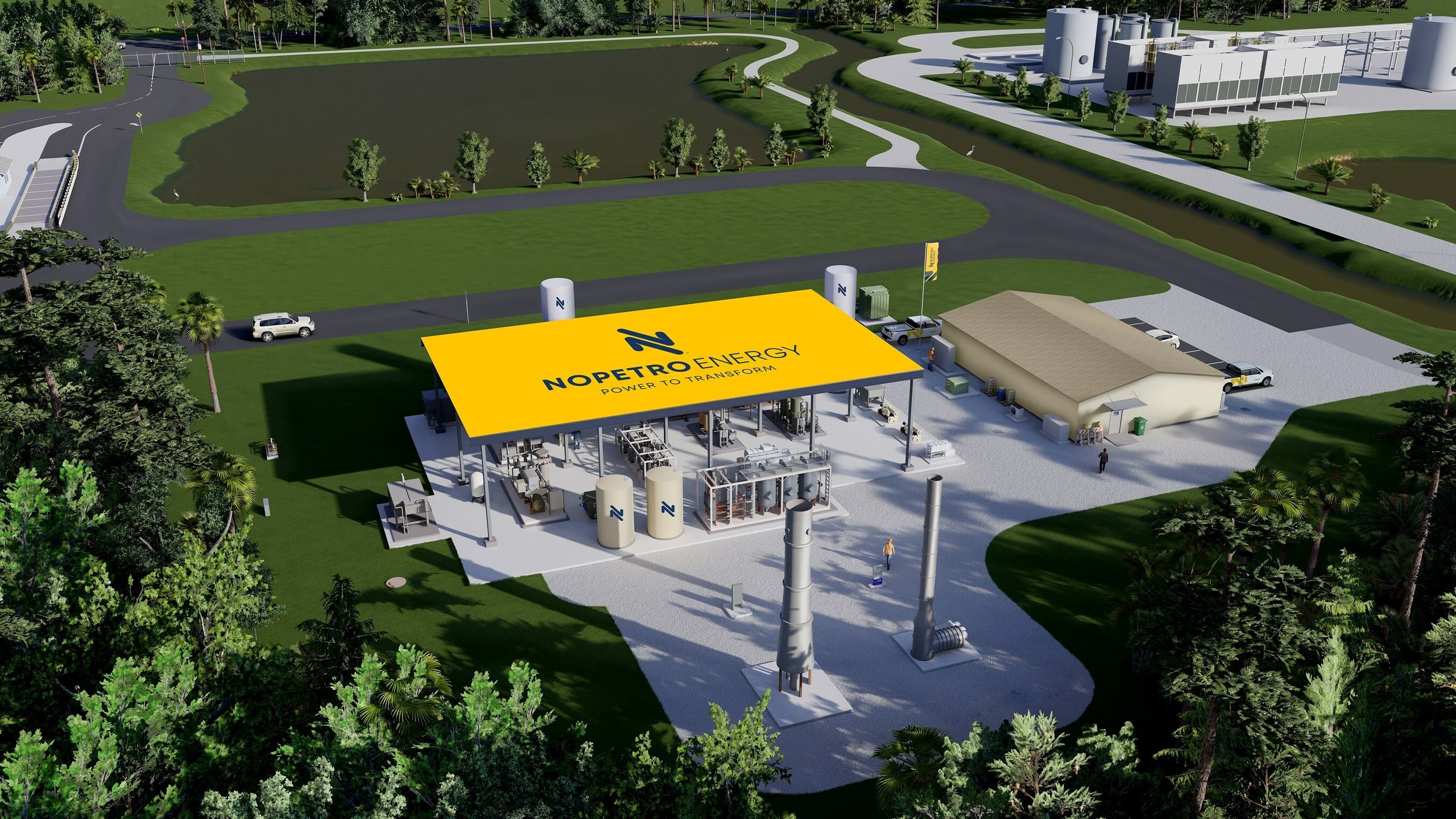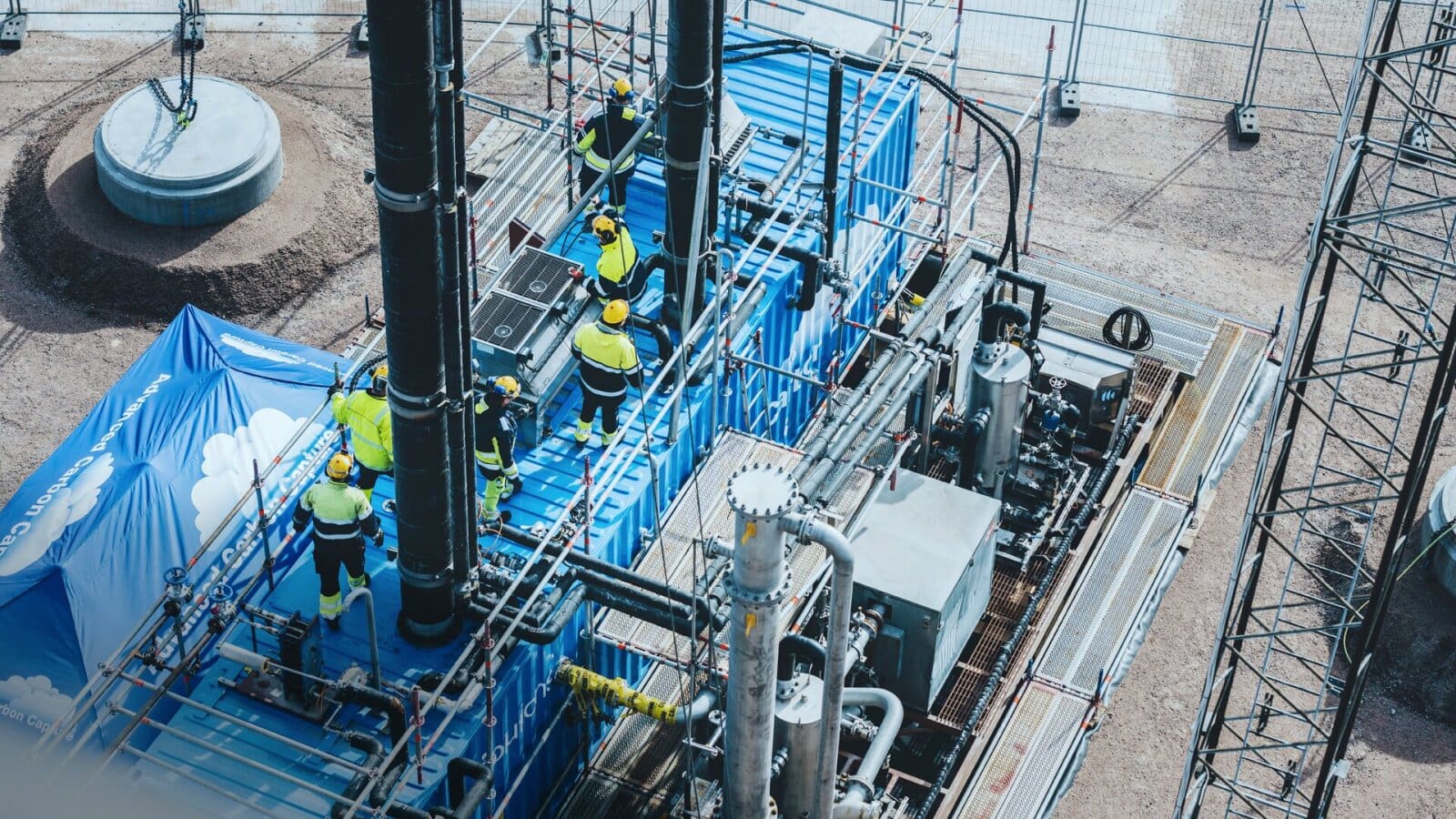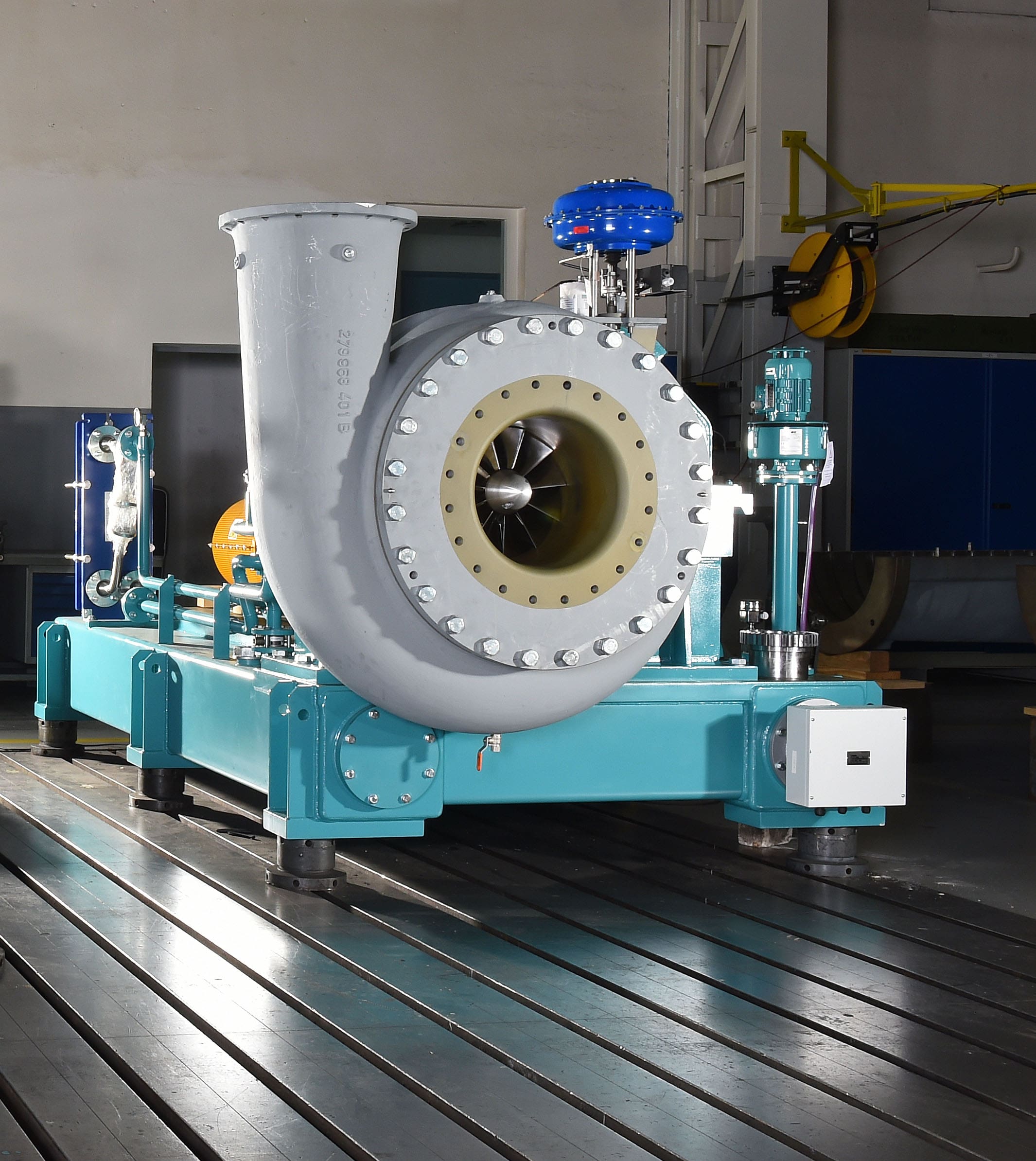Equinor’s Hywind Scotland, the world’s first commercial floating offshore wind farm, notched the highest average capacity factor for any wind farm in the United Kingdom for the third year in a row. Capacity factor is the ratio of energy output compared to maximum possible output over a given period of time.
During its first two years of operation, Hywind achieved an average capacity factor of 54% compared to the UK average of 40%. In the 12-month period that ended in March 2021, it achieved a 57.1% capacity factor.
Hywind Scotland was completed in 2017 for around US$220 million. It is comprised of five, 6-MW Siemens turbines mounted on single point anchor reservoir (SPAR)-type foundations. Located 18 miles (29 km) off Peterhead, Scotland in the North Sea, it produces enough energy to power around 36,000 homes.
In 2022, Equinor hopes to launch its Hywind Tampen project for an estimated cost of US$550 million. Located 87 miles (140 km) off the Norwegian coast in the North Sea, it will consist of 11 8-MW wind turbines. Upon completion, it will become the first renewable power source for offshore oil and gas platforms and be responsible for 35% of the annual power demand for five Gullfaks and Snorre platforms.
New Horizons For Floating Offshore Wind
The UK’s stated announcement calls for 1 GW of floating offshore wind by 2030. However, Equinor and other industry leaders estimate up to 2 GW by 2030, and well as a multi-GW pipeline of projects to help deliver on the UK’s longer-term net zero emissions goals. According to Equinor, the efficiency of Hywind Scotland validates the potential for floating offshore wind. It also provides useful data that can be used to further the success of larger offshore wind projects expected to come online in the coming five years. “At Equinor, we are constantly striving to improve the performance of our assets, whilst ensuring we extract learnings to support future projects,” said Sonja Chirico Indrebø, plant manager for Hywind Scotland and Equinor’s Dudgeon wind farm. “The turbines on Hywind Scotland are covered in sensors to extract as much data from the wind farm as possible. We’re monitoring everything from ballast, mooring, structural strains, and the more regular wind turbine sensor data, looking at how best to optimize this innovative technology as we prepare to develop at scale. We’re sharing parts of this data across the industry to help the advancement of the technology globally and more widely than just our own operations.”
“It’s great to see the results Hywind Scotland and the floating technology keeps delivering,” said Sebastian Bringsværd, head of floating wind development at Equinor. “The potential for floating offshore wind is huge. With access to deeper waters and therefore higher and more consistent wind speeds, floating offshore is not only an efficient way to generate electricity from wind, but this exciting technology can also provide jobs and value creation for the countries supportive of floating [offshore wind]. We believe Scotland has the potential to build a globally competitive offshore wind industry, including a real chance to enhance the development of floating offshore wind.”
Cost Reductions And Job Creation
As Equinor’s projects grow in scale, so does its belief that costs per MW will be much cheaper with larger projects. Between its initial demonstrator, which had a capacity of 2.3 MW, and Hywind Scotland’s 30-MW capacity, Equinor realized a 70% reduction in capital expenditures (capex) per MW. It expects a 40% decrease in capex per MW between Hywind Scotland and the 88-MW Hywind Tampen project.
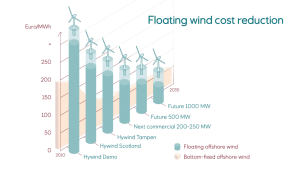
“The global energy industry has been pleasantly surprised by the rapid decline in the cost to deploy fixed bottom offshore wind,” said Bringsværd. “We’ve been working on floating offshore wind for more than 10 years, and we see that significant cost reductions can be achieved through scale and experience, paving the way for floating [offshore wind] to become fully commercialized.”
In the UK alone, Equinor notes that up to 17,000 jobs and US$46.97 billion in gross value added (GVA) could be generated by floating offshore wind by 2030.



